I've got a row dimensional array of values that I want to visualize in 3D and I'm using scene kit under OS X for it. I've done it in a clumsy manner by using each column as a point on the X axis, each row as a point on the Z axis, and each value as a normalized point on the Y axis -- I place a sphere at the vector defined by each data point. It works but it doesn't look too good.
I've also done this by building a mesh of lines based on @Matthew's function in Drawing a line between two points using SceneKit (the answer he posted, not the original question). For each point I use his function to draw two lines - one between my current point and the next point to the right and another between my current point and the next point towards the front (except when there is no additional column/row, of course).
Using the second method, my results look much better... however the performance is quite hideous! It takes quite a long time to complete the initial rendering, and if I use a trackpad/mouse to rotate or translate the scene, I might as well get a cup of coffee to wait until my system is usable again (and this is not much hyperbole). Using the sphere method, things render and update very quickly.
Any advice on how to improve the performance when using the lines method? (Note that I am not trying to add both lines and spheres at the same time.) Code-wise, the only difference between approach is which of the following methods gets called (and that for each point, addPixelAt... is called once, but addLineAt... is called twice for most points).

- (SCNNode *)addPixelAtRow:(CGFloat)row Column:(CGFloat)column size:(CGFloat)size color:(NSColor *)color
{
CGFloat radius = 0.5;
SCNSphere *ball = [SCNSphere sphereWithRadius:radius*1.5];
SCNMaterial *material = [SCNMaterial material];
[[material diffuse] setContents:color];
[[material specular] setContents:color];
[ball setMaterials:@[material]];
SCNNode *ballNode = [SCNNode nodeWithGeometry:ball];
[ballNode setPosition:SCNVector3Make(column, size, row)];
[_baseNode addChildNode:ballNode];
return ballNode;
}

- (SCNNode *)addLineFromRow:(CGFloat)row1 Column:(CGFloat)column1 size:(CGFloat)size1
toRow2:(CGFloat)row2 Column2:(CGFloat)column2 size2:(CGFloat)size2 color:(NSColor *)color
{
SCNVector3 positions[] = {
SCNVector3Make(column1, size1, row1),
SCNVector3Make(column2, size2, row2)
};
int indices[] = {0, 1};
SCNGeometrySource *vertexSource = [SCNGeometrySource geometrySourceWithVertices:positions count:2];
NSData *indexData = [NSData dataWithBytes:indices length:sizeof(indices)];
SCNGeometryElement *element = [SCNGeometryElement geometryElementWithData:indexData
primitiveType:SCNGeometryPrimitiveTypeLine
primitiveCount:1
bytesPerIndex:sizeof(int)];
SCNGeometry *line = [SCNGeometry geometryWithSources:@[vertexSource] elements:@[element]];
SCNMaterial *material = [SCNMaterial material];
[[material diffuse] setContents:color];
[[material specular] setContents:color];
[line setMaterials:@[material]];
SCNNode *lineNode = [SCNNode nodeWithGeometry:line];
[_baseNode addChildNode:lineNode];
return lineNode;
}